Chapter 9
Organizing a Programme: Who does What
In This Chapter
![]() Understanding the basic roles in your programme
Understanding the basic roles in your programme
![]() Allocating responsibilities to each programme role
Allocating responsibilities to each programme role
![]() Adjusting the relationships between roles
Adjusting the relationships between roles
![]() Maintaining the power balance between roles
Maintaining the power balance between roles
Each programme has its own organization with defined roles and responsibilities, and it is almost certainly supported by a Programme Office. The organization structure for a programme can be fairly straightforward, although as I discuss in this chapter, the relationships between the different roles become quite subtle in larger programmes, and you need to balance the power of these roles.
I lay out the responsibilities of roles such as the Senior Responsible Owner, the Programme Board, the Programme Manager, Business Change Managers, Business Change Teams and Programme Office. I also consider the attributes you need to look for in the people you ask to fill each of the roles: after all, people have different strengths, skills and experience, and you want the right person in the right role.
Considering the Basics
The basic organization model for a programme is simple.
The Sponsoring Group appoints a Senior Responsible Owner (SRO) as part of the Identifying a Programme process and a Programme Manager reports directly to that SRO. At the same time a number of Business Change Managers, who work in business as usual, also report to the SRO. The Programme Manager, or the team Defining the Programme, put more detail on the organizational structure. I explain this process in Chapter 7 and if you want to check out an organizational diagram, take a look at Figure 7-3.
Tightening up or hanging loose: The two extremes of programme organization
Before I describe the specific programme roles in the following section, here are two real-world examples for you to mull over. Note that the organization structure of a programme can range from being extremely simple through to very sophisticated, even complex. No standard right answer exists; you have to evolve a structure that works for your programme and its culture.
Although the firm was keeping the front of the old building, managers were completely redeveloping and extending it. I don't want you to imagine that this was just a simple project to add a few new offices; a tremendous amount of technology was involved. (Just to give you a feel for the size of this programme, the building is so famous that I guess if you switched on a TV virtually anywhere in the world, within an hour or so pictures of this building would be broadcast.)
I went for a briefing on this programme. The Programme Manager drew the organization structure for me. He completely filled a flipchart with roles and structures (committees) with interlinking loops and swirls. It took the best part of an hour for him to describe the structure, and, frankly, by the end of it I simply didn't understand what was going on. It wasn't that he hadn't described the organization clearly; it was just that it was too complex.
In contrast, here's an example of a loose programme. While still big – the programme budget was of the order of £1 billion – what made this programme different is that the vast majority of the expenditure was in a single very large project. The rest of the programme still had its complexities; it affected organizations in 13 or 14 different countries. Yet just three people organized this programme. The Programme Manager had only two assistants, who were graduates on secondment for a year. Because it was a loose programme, the Programme Manager could keep in touch with all its different elements with this tiny team.
Create a programme organization structure that's appropriate for your circumstances.
Reading the role call
In this section, I look at the basic relationships between the main roles and provide a brief overview of each one. For a more detailed description of each role's responsibilities, check out the later section ‘Taking Responsibility’.
Figure 9-1 shows the classic structure for a programme. Of course, this diagram is basic and your own programme may well require a much more complex structure. On second thoughts, complex is quite a negative term; I prefer to say that your structure may be much ‘richer’.

Figure 9-1: Senior Responsible Owner and the Programme Board.
I now give you a quick overview of each of these roles.
Sponsoring Group
A programme is of strategic importance, so you need the executive level commitment that comes from the Sponsoring Group.
Senior Responsible Owner
The SRO is one of the members of the Sponsoring Group. Senior Responsible Owner is a strange term, but it is widely used. If it doesn't fit with your culture, you can substitute the term Programme Director (see the nearby sidebar ‘What's in a name?’).
Programme Board
The SRO needs to get together with the other key managers within the programme, most likely called a Programme Board. The Programme Board reports to the SRO. The members of the Board can, for example, include Business Change Managers, and so the Programme Board gives a level of business involvement to the programme. Probably the Programme Board establishes the governance for the programme. Its purpose is to drive the programme forward and deliver outcomes and benefits.
Programme Manager
Business Change Managers
The programme has to do more than deliver a capability: it has to exploit that capability in order to achieve strategic outcomes and benefits. Business Change Managers make this happen.
Note that I say ‘managers’. Very rarely does a programme have only one Business Change Manager. Usually, each area affected by the programme has one Business Change Manager.
Business Change Team
Despite having a number of Business Change Managers, even more people are likely to be involved in business change.
Each Business Change Manager is likely to be supported by a Business Change Team. Together they create new business structures, new operations and new working practices.
Programme Office
The Programme Office is the custodian of the standards used to execute projects. But it also gives supporting and guidance to projects. Furthermore, the Programme Office may be the home of governance and control, and if so it needs to remain independent of initiatives.
Therefore, a large Programme Office can have a number of discrete elements.
Project Boards
Projects are likely to have Project Boards, from where a project is directed. A Project Board may exist for each project or perhaps look at several related projects. I don't examine the role of Project Board in any more detail here.
Taking Responsibility
This section describes the responsibilities and attributes of the following:
- Sponsoring Group
- Senior Responsible Owner
- Programme Board
- Programme Manager
- Business Change Manager
- Business Change Team
My hope is that these detailed descriptions of role responsibilities provide you with an extremely useful starting point when defining someone's terms of reference and a firm foundation for designing your own programme management structure (even if you don't want to read this section at one sitting!).
Getting executives on-board: Sponsoring Group
The Sponsoring Group doesn't play a significant role in the monitoring and control of the programme, but it does have an absolutely vital role in leading the programme:
- It makes the executive-level commitment to the programme.
- It comprises the senior managers who are responsible for the investment in the programme.
- It has to establish and demonstrate the values and behaviours of the new world.
- It understands that normal reporting lines probably don't apply, such as individuals from one organizational unit reporting to senior managers from another.
- It acts as the overarching authority for the programme.
- Its members may have to display different leadership styles from the ones they use when running business as usual, for example:
- More team working.
- Greater empowerment of individuals within the programme.
- It encourages initiative by:
- Taking risks itself.
- Recognising when taking risks is appropriate in certain circumstances (and in a programme that may be all the time … just kidding!)
Leading the Programme: Senior Responsible Owner
The SRO is a member of the Sponsoring Group and ultimately accountable for the success of the programme. The SRO:
- Is an individual (that is, only one SRO)
- Is a peer member of the Sponsoring Group
- Has personal responsibility
- Is empowered to direct the programme
- Has sufficient seniority and authority
- Is probably part-time as SRO because they keep their day job
- Is ultimately accountable for success
Responsibilities
The SRO is a champion and leader of the programme, but each of the person's responsibilities is quite subtle.
You expect the SRO to have some responsibility for each of the governance themes. (How you manage the different aspects of the programme; refer to Chapter 1). You can use the comprehensive Contents or the Index to find more details on a particular aspect or term.
- Creating and communicating the Vision
- Providing clear leadership and direction
- Securing the investment required to set-up and run the programme and to fund the transition activities in order that the Business Change Managers can achieve the benefits
- Ensuring that the programme delivers a coherent capability, achieves its strategic outcomes and realizes its benefits
- Establishing the programme's governance arrangements and ensuring that appropriate assurance is in place
- Assuring the viability of the programme Business Case
- Engaging and informing key, probably senior, stakeholders
- Monitoring and managing the strategic risks facing the programme
- Maintaining alignment with the strategic direction of the parent organization
- Commissioning assurance and audit reviews
- Assuring the effectiveness and performance of the programme organization
- Appointing and chairing the Programme Board
This list may seem daunting, but in reality it's what any senior manager accountable for a strategic initiative would be doing naturally. So the SRO doesn't have to dedicate enormous amounts of time to managing the detail of the programme.
Attributes
You're unlikely to ever have to appoint an SRO, but you may find yourself being consulted about who can fulfil the role or why someone's doing a good or poor job.
- Has the seniority that goes with the accountabilities for the programme and for the detailed responsibilities the person needs to execute. To put it less formally, they need to be a big enough beast to carry the can when the brown stuff hits the fan. Is that enough mixed metaphors?
- Is proactive and visible as the driving force behind the programme without being aggressive or overbearing
- Possesses strong leadership and decision-making skills
- Has the right experience, character and personality for the particular programme
- Combines realism with openness and clarity of expression in order to be able to communicate the programme's Vision effectively
- Gives purpose and direction to the programme by taking strategic decisions where necessary
- Focuses on the delivery of benefits and the achievement of the end goal
- Builds productive relationships across the programme team
- Has access to and credibility with key, probably senior or influential, internal and external stakeholders
I have to say that I've met very few leaders with all these personality traits. The world would be dull if everyone was this perfect. I'm sure you'd agree that such as person would be quite a character!
Providing governance: Programme Board
The Programme Board reports to the SRO and gives business involvement and establishes governance for the programme. The members can help drive the programme forward to deliver outcomes and benefits.
At a minimum the Programme Board comprises:
- SRO
- Programme Manager
- Business Change Manager(s)
General responsibilities
The Programme Board's responsibilities go beyond merely monitoring projects, so take a look in Part IV in order to appreciate those wider responsibilities.
- Defining risk profiles and thresholds for the programme and for projects.
- Ensuring that the programme delivers within the agreed boundaries, including:
- Cost
- Organizational impact
- Pace at which new capabilities are adopted
- Expected and actual benefits
- Resolving strategic issues between projects or issues of direction that need the input and agreement of several stakeholders.
- Ensuring the integrity of benefit profiles and the realization plan.
- Maintaining focus on the development, maintenance and achievement of the Blueprint.
- Providing assurance that business as usual remains stable and effective even as the programme transforms the business.
Local responsibilities
Although the Programme Board meets as a group, individual members also provide support for the SRO in their own areas of work. The sort of local responsibilities they have includes:
 Helping their areas of work understand the impact of change and helping to manage change.
Helping their areas of work understand the impact of change and helping to manage change.- Monitoring achievement of the previously defined benefits.
- Resolving issues and risks that relate to their area of work.
- Dealing with dependencies, for example between change projects or within business as usual.
- Ensuring the viability and integrity of the Blueprint in their areas.
- Representing local strategy back to the programme as expressed in, for example, medium-term local plans.
- Supporting the application of and compliance with standards that the programme is defining.
- Making resources available to plan and execute programme activities.
Running things day-to-day: Programme Manager
Briefly the Programme Manager leads and manages:
- Setting up the programme
- Delivering new capabilities
- Realizing benefits
- Closing the programme
Responsibilities
This Programme Manager's primary responsibility is successful delivery of new capabilities and establishing governance.
The Programme Manager is responsible for day-to-day management of the programme. Usually this person takes it forward from the Identifying or Defining a Programme processes and then carries out the supervision, control and closure of the programme. The Manager is the day-to-day agent of the SRO, carrying out planning and design of the programme and proactively monitoring its overall success. The Manger also resolves issues and initiates corrective action.
- Developing and implementing the programme governance framework.
- Ensuring effective co-ordination of the projects and dealing with inter-dependencies; for example, among projects or between projects and business as usual.
- Managing and resolving risks and issues.
- Maintaining the overall integrity and coherence of the programme.
- Developing and maintaining the programme environment in order to support each individual project within it.
- Managing the programme's budget, which means monitoring expenditures and costs against benefits as the programme progresses.
- Facilitating the appointment of individuals to the programme delivery teams.
- Ensuring that the delivery of outputs or services from the projects meet programme requirements in line with the programme Blueprint and Project Dossier, including ensuring that these outputs are of appropriate quality, on time and within budget.
- Facilitating the development of the Blueprint, including getting approval from the Business Change Managers.
- Managing the Blueprint and ensuring that the capabilities delivered are aligned with the Blueprint.
- Managing the performance of the programme management team.
- Maximising the efficient allocation of resources and skills within the Project Dossier.
- Managing internal and external suppliers to the programme.
- Managing communications with stakeholders.
- Reporting progress of the programme at regular intervals to the SRO.
- Initiating extra activities and other management interventions where gaps exist.
I just love that final responsibility of filling in the gaps; as if the Programme Manager doesn't have enough to do. But this list makes quite clear that the Programme Manager is at the heart of the programme.
Attributes
Here are some of the key attributes of a good Programme Manager:
- The ability to work positively with the full range of individuals and groups involved in the programme.
- An ability to develop and maintain effective working relationships with other members of the programme management team, senior managers, project teams and third-party service providers.
- The seniority to be able to take on the responsibility associated with the role.
- Strong leadership and management skills.
- An understanding of the wider objectives of the programme.
- Credibility within the programme environment and the ability to influence others.
- A good knowledge of the techniques for planning, monitoring and controlling programmes, including risk management.
- A good knowledge of project management approaches, for example, PRINCE2.
- A good knowledge of budgeting and resource allocation.
- The ability to find innovative ways of pre-empting and solving problems.
Taking charge of change: Business Change Managers
The Business Change Managers, one for each area, carry out the following tasks:
- Facilitate business change in order to exploit capability.
- Create new business structures, operations and working practices.
- Realize benefits by embedding capability.
While you read the responsibilities and attributes of the Business Change Managers in this section, you can see that they need to be genuinely from the business and retain sufficient responsibilities within the business to keep in touch with what's going on there. Plus, they need a softer set of skills than you may find in people from a project background. Success isn't as simple as creating a plan and telling people to execute it. Business Change Managers really need to know the people they're working with and have a knack for persuading them to do things differently, as well as other change management skills.
Responsibilities
Business Change Manager is a new role if you've not worked on a programme before. It has to be someone from within the organization who continues to hold responsibilities for business-as-usual operations.
Business Change Mangers have the following responsibilities:
- Focus on realizing beneficial change.
- Contribute to the development of the Benefits Management Strategy.
- Allocate responsibilities in the business for drafting and delivering Benefits Profiles and the Benefits Realization Plan.
- Identify, define and track the benefits and outcomes required by the programme.
- Design the future operating model, sometimes known as the ‘to be’ state part of the Blueprint, ensuring that it's contained in the Blueprint and maintained as the programme and the Blueprint evolve.
- Identify organizational changes that happen outside the boundary of the programme but which may affect the contents of the Blueprint.
- Prepare their own areas of work for change.
- Identify opportunities and realize new benefits that arise during the programme, which may not have originally been profiled, and ensure that the achievement of these extra benefits is recognized.
- Ensure effective communication with all areas of the business that they represent.
- Identify and monitor the performance metrics used to track the operational health of the organization.
- Implement mechanisms by which benefits can be realized and measured.
- Monitor business stability and the on-going capacity to cope with the level of change that the programme creates, which may involve establishing how far performance can be allowed to deteriorate while the change is being embedded.
- Report to the SRO the readiness for change, achievement of outcomes and realization of benefits.
- Advise the Programme Manager whether the work of the programme and of each project covers the necessary aspects required to deliver the products and outputs, the services and outcomes that will achieve the Blueprint and lead to benefits.
- Ensure that no double counting of benefits takes place for which they're responsible.
- Prepare the affected business areas for the transition to new ways of working so that they can implement new business processes.
- Ensure business stability is maintained during the transition to the new ways of working and the changes are effectively integrated into the business.
- Initiate business assurance reviews to ensure that capabilities are being embedded and optimized.
- Optimize the timing of the release of project deliverables into business operations.
- Notify delivery of the expected benefits.
Attributes
The key thing about Business Change Managers is that they have credibility. They:
- Are drawn from the relevant business areas in order to demonstrate detailed knowledge of the business environment and to have direct business experience.
- Almost certainly keep on-going operational responsibilities within their areas.
- May have participation in the programme as an integral part of the normal responsibilities, in order to ensure that the changes resulting from the programme are properly embedded in the organization.
- Have the confidence of senior managers from the areas to be changed.
- Understand the management structures, the politics and culture of their areas.
- Have the management skills to co-ordinate personnel from different disciplines and with different viewpoints.
- Have some understanding of change management and enough experience to bring order to the complex situations that the programme triggers.
- Maintain focus on the programme's objectives.
- Have negotiating skills.
- Have fluency in their interpersonal relationships, be comfortable with ambiguity and be able to prioritize in a dynamic way.
- Need access to specific skills, for example, process analysis, benefits identification modelling, and analysis and business continuity management.
Supporting change: Business Change Team
The Business Change Teams are the specialists who support each Business Change Manager. They prepare their areas for transition to the new ways of working and help their operational units to transition smoothly. The size and composition of the Business Change Team is likely to evolve over the course of the programme and individuals, say with particular expertise, may be members of multiple Business Change Teams.
Therefore, the skills they need include the following:
- Change management.
- Operational experience.
- Authority to influence the people in the area that's changing.
Reading about the Relationships between Roles
You can use programme management to run some really substantial change initiatives, which is why I include a fair amount of detail about the roles and responsibilities in the two earlier sections ‘Considering the Basics’ and ‘Taking Responsibility’. Nevertheless, you still need to tailor these basic roles and responsibilities fairly radically in order to create an organization structure that suits your programme and culture.
In this section I share with you a number of different ways in which you can tailor the basic programme management structure, particularly as regards the relationships of the roles and responsibilities.
Linking project and programme management roles
Some form of structured project management is almost always necessary within an MSP programme, and although PRINCE2 isn't compulsory, it is highly suitable for MSP. (Have a read of PRINCE2 For Dummies by Nick Graham (Wiley) for more about this project management practice.) To illustrate how programme management staff can fulfil project management roles, I show the MSP and PRINCE2 roles in Figure 9-2. The Programme Manager can also act as the Executive on a PRINCE2 Project Board and the Business Change Manager can also take on the role of Senior User.
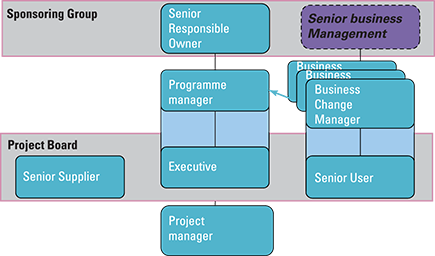
Figure 9-2: Linked programme and project roles.
The downside, of course, is that these busy programme people are taking on an additional set of responsibilities. But it's one way of making sure the programme stays in touch with particular projects. I don't suggest that the Programme Manager is the executive for every project, but it is often worth doing so for one or two key projects.
Integrating project organizations
Figure 9-3 looks at three different ways in which you can integrate programme and project roles:
- Scenario A shows a dedicated Project Board. The programme authorises the terms of reference of the Project Board and provides strategic direction. The Project Board is then free to concentrate on the project. This situation is particularly suitable when a project is large but not necessarily central to the programme.
- Scenario B applies to projects that are central to the programme. In this case the Programme Manager acts as Project Director and can maintain a tight, direct link between the programme and the project.
- Scenario C shows the situation where a Business Change Manager acts as Senior User on a Project Board. I look at this arrangement in the preceding section.
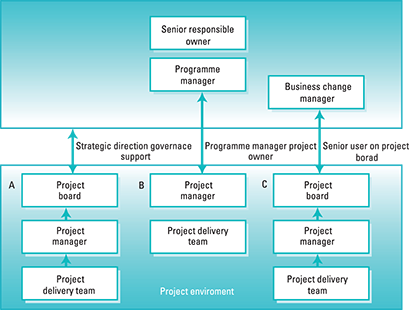
Copyright © AXELOS Limited 2011 Reproduced under licence from AXELOS
Figure 9-3: Three options for integrating project organizations.
Co-operating in cross-0rganizational programmes
You can create a committee called the Sponsoring Group if you work on a multi-organization programme. In this situation several organizations have to co-operate in order to deliver a programme, as in Figure 9-4. That co-operation is a bit more intimate than where one organization simply has a supplier providing a range of technical services.
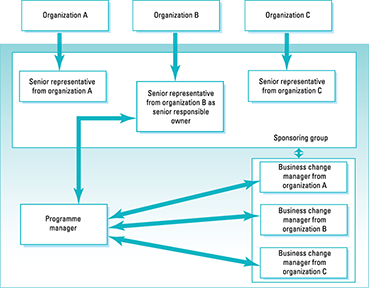
Copyright © AXELOS Limited 2011 Reproduced under licence from AXELOS
Figure 9-4: Cross-organizational programmes.
For a cross-organizational programme, the SRO chairs the Sponsoring Group. This body assists with the direction-setting and leadership of the programme and is an excellent venue for bringing together key stakeholders. In certain circumstances, the Sponsoring Group may decide to act as a Programme Board as well.
Handling multiple programmes
If an organization is running several closely related programmes, you may have considerable overlap between the Programme Boards.
Tracking programme evolution
Programmes change over their lifetimes because they typically last for so long. Usually the most significant changes are made at a tranche boundary. As a programme evolves it requires different skills: at the beginning design skills, later on project delivery skills and towards the end the focus moves to business change.
Therefore, as the programme evolves you need different leadership styles and different people in a significantly modified organizational structure.
Balancing Power between Roles
After you decide how to adjust the relationships between your programme's defined roles (see the earlier section ‘Reading about the Relationships between Roles’), you need to look at the relative power in different parts of the programme organization and what you can do to maintain the power balance, perhaps even increasing your power within the programme (as Snap! sang in 1990: ‘I've got the power!’).
Spreading the work with additional roles
Often Programme Managers find pretty quickly that their workload is just too high. They need to define additional roles to help them with the work. You can place these roles in the Programme Office or they can report directly to the Programme Manager.
You can also delegate some of the Business Change Managers’ responsibilities to additional roles within Business Change Teams or the Programme Office.
Table 9-1 features a few of the roles you may need, though I've seen an enormous range of roles defined in programmes. If you can justify the additional role, feel free to set it up.
Table 9-1 Useful Additional Roles
|
Additional Role |
Function |
|
Benefits Realization Manager |
Reports to Business Change Managers with delegated responsibility to manage benefits management activities of the programme |
|
Design Authority |
Integrity of the Blueprint |
|
Risk Manager |
Risk management |
|
Quality Manager |
Quality management |
|
Programme Accountant |
Business Case development |
|
Procurement Roles |
Procurement advice |
Many of these additional roles can sit comfortably in the Programme Office (which I describe in the later ‘Looking at the Programme Office’ section). Indeed, thinking functionally, you can have the staff in the Programme Office cover any of the specializations within the governance themes (for example, a risk co-ordinator to cover the risk governance theme), creating jobs such as planner or issue co-ordinator.
Bringing in HR management
Programmes last for such a long time that people may work within them for several years. Therefore, you may need a human resources (HR) function within the programme. I prefer to approach the HR department and persuade it to second someone to the programme.
This function helps you ensure that you have the right people in the programme at the right time and are using the correct HR policies. Matrix management is where you report to two bosses, which I think is quite hard to make work. You may have just that situation in your programme and the relationship between the losing line department and the programme can lead to tensions, so you need to work out how things such as annual appraisals are carried out.
If people have been working in a programme for several years, they may not have a job to go back to and the experience they've gained in the programme may not be valued. You need to look after your people by helping them find appropriate work in the transformed organization after the programme ends.
Procuring effectively
You can also consider seconding someone from procurement. You may be procuring all sorts of items: buildings, services and people. One thing you may need to procure is programme management expertise. Organizations and governments sometimes have quite complex rules for procurement that you need to fit in with.
You may want to think about using existing contracts, if they give an opportunity for resources at a good price without constraining the programme.
Pondering programme assurance responsibilities and conflicts of interest
When you're designing your programme governance you need to think about how you integrate programme responsibilities in your organization structure while making sure that people carrying out assurance functions are sufficiently independent. I look in detail at assurance in Chapter 14.
At first sight the Programme Office is the obvious place from which to carry out programme assurance. Be careful to make sure that the three functions shown in Figure 9-5 ‒ Programme Office, Project Support Office and Programme Assurance ‒ are sufficiently independent. For more on the Programme Office, check out ‘Looking at the Programme Office’ later in this chapter.
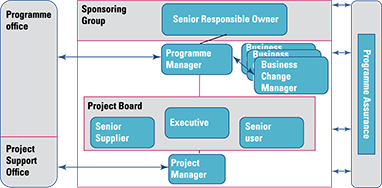
Figure 9-5: Programme and project support.
Going with the (information) flow
Information is power. So ensure that you look often at the information flows in your programme and use them as a way of focusing power where you want it to be.
Figure 9-6 contains three examples:
- Information flows via the Project Boards: Makes those Boards powerful.
- Information flows directly to the Programme Manager: Can overload that person.
- Information flows through programme support – the Programme Office: Increases the power of the Programme Office, which may end up losing its objectivity.
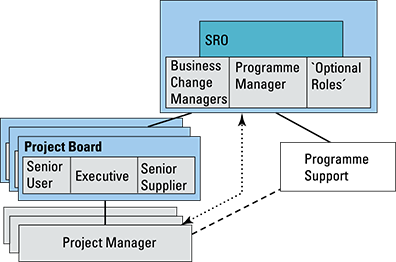
Figure 9-6: Three possible information flows.
Think about what power exists in the organization and where you want to reinforce or diminish that power. If you want to strengthen power, improve the information flow in that area. If you want to counterbalance power, strengthen other information flows.
Allocating programme staff to project teams
You may want to have some of your programme staff in project direction roles. I look briefly at this topic earlier in the ‘Reading about the Relationships between Roles’ section. For example, asking someone from your Design Authority to act as Senior Supplier on a Project Board improves the flow of information from that Board and helps to consolidate your power ‒ though it may compromise the Board's independence.
This power-balancing all gets a bit tricky, doesn't it? But getting the balance of power right in a programme is important. Make sure you put aside a bit of time to reflect on the current balance of power and what balance you're trying to achieve.
Looking at the Programme Office
Many organizations use the services of an office to support the implementation and delivery of the changes in a business that the programme brings about. This office may be called a Programme Office or a Centre of Excellence or be known by any number of abbreviations: PPSO, PMO, P3O, C3PO (okay, I admit I made that last one up!) I don't want to duplicate the excellent advice that's available elsewhere on these offices (notably in P3O published by The Stationery Office), but here's a brief summary of a Programme Office's purposes:
- Acts as the conscience and support body for the SRO and Programme Board.
- Provides advice and can challenge decisions the SRO and Programme Board need to take.
- Supplies a valuable source of intelligence in relation to the health of various elements of the programme.
Linking to other offices
Your Programme Office may have to link with and complement other offices:
- A Portfolio Office can have oversight of all the organization's change initiatives and provide you with valuable context.
- A Centre of Excellence can set some relevant standards.
- An existing or newly set-up Project Office can provide services to your projects.
You can have a number of Programme Offices, perhaps in different locations or based with workstreams (I cover the latter in Chapter 10).
Adding information hub functions
I love having an information hub in my Programme Office. The hub provides a crucial but elegant function that can maintain a high degree of control of the programme without imposing onerous information-reporting requirements on projects in business as usual.
- Change control
- Financial accounting
- Information management
- Interface and dependency management
- Quality control
- Risk and issue tracking
- Stakeholders communication
- Tracking and reporting
Using additional expertise
The Programme Office can also provide other services that require more skill or experience and are valued highly by those working in the programme:
- Analysis
- Assistance with techniques
- Coaching and mentoring
- Establishment of infrastructures
- Information and standards custody
If the other offices that you link to are rough and ready (the fancy term for that is immature) or non-existent, you may have to provide some of these services:
- Consultancy-style reports
- Health checks
- Internal assurance
- Strategic overview and upward reporting
If no corporate-level strategic change office (often known as a portfolio office) exists, the Programme Office may have to keep an eye on what's happening in the organization at the strategic level and also report to the senior level. You may want to strengthen the Programme Office's consultancy function so that it can provide consultancy-style reports to others in the organization who need them.
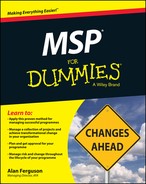
 I once attended a briefing on a programme to return the headquarters of an iconic organization to the famous old building in which the organization had started.
I once attended a briefing on a programme to return the headquarters of an iconic organization to the famous old building in which the organization had started. Only rarely is a structure formed called the Sponsoring Group in reality. Usually your organization already has a structure that functions as the Sponsoring Group; it may be called the Board of Directors or the Senior Management Team or something similar. Please don't try and get the group to change its name.
Only rarely is a structure formed called the Sponsoring Group in reality. Usually your organization already has a structure that functions as the Sponsoring Group; it may be called the Board of Directors or the Senior Management Team or something similar. Please don't try and get the group to change its name. The Programme Manager is at the heart of the programme and undertakes the day-to-day programme management. This person ensures delivery of the new capabilities on behalf of the SRO and plans, designs and monitors the programme.
The Programme Manager is at the heart of the programme and undertakes the day-to-day programme management. This person ensures delivery of the new capabilities on behalf of the SRO and plans, designs and monitors the programme.